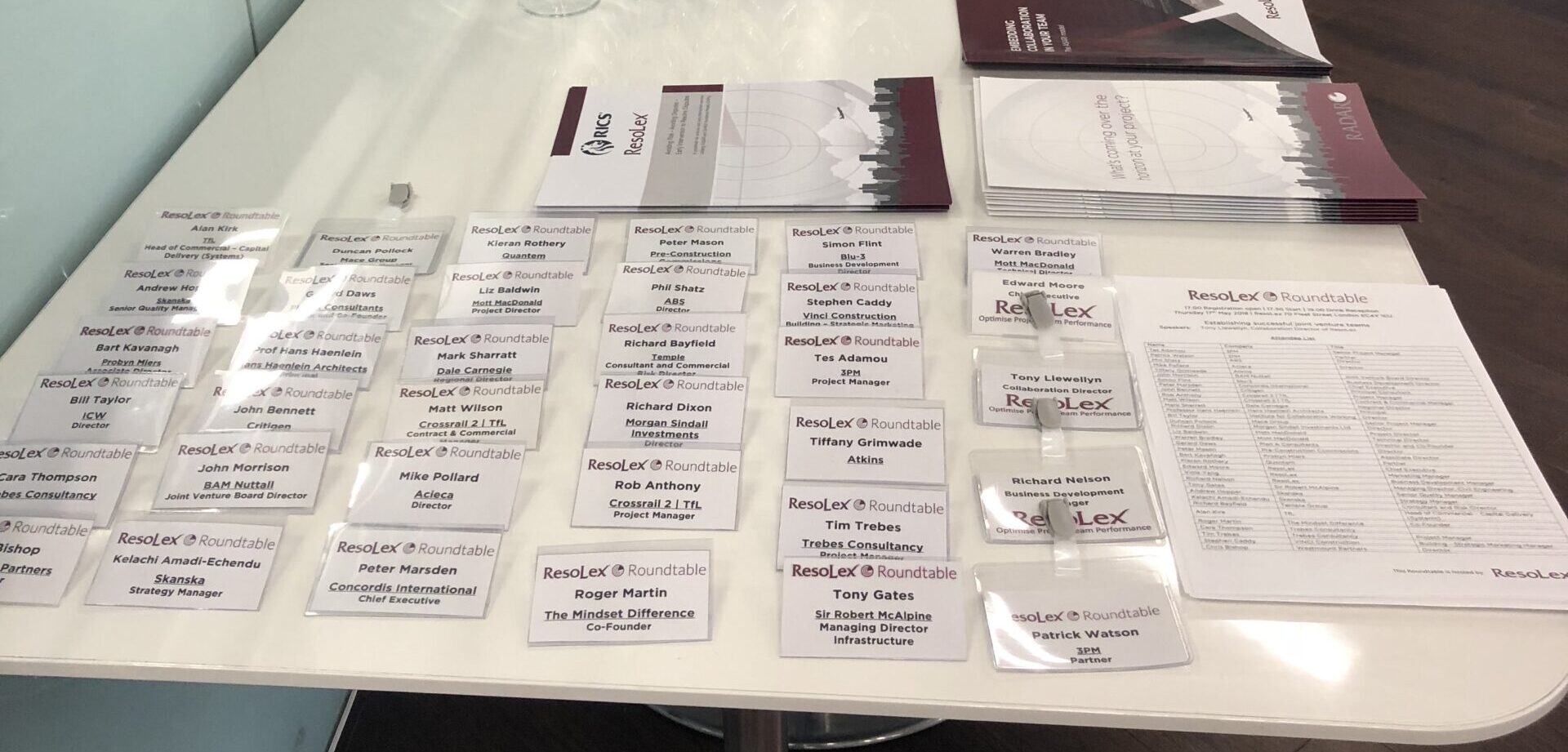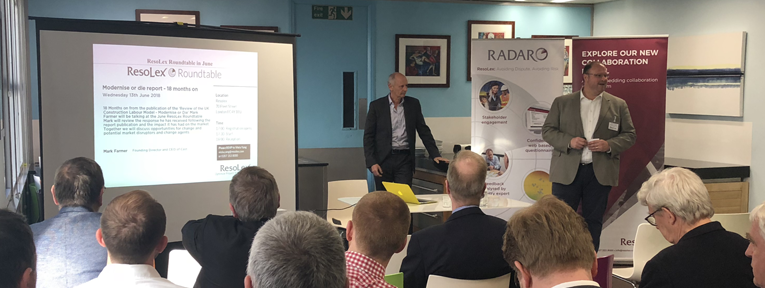Speaker: Tony Llewellyn, Collaboration Director of ResoLex, Visiting Lecturer at the University of Westminster
This month’s round table meeting focused on the output of a research project that Tony has been working on for the last eight months. He has a long-standing interest in the dynamics of large project teams and the challenges of creating cohesive and collaborative groups working on construction projects. Recent experience in facilitating a number of workshops of two or more firms about to go into a joint venture highlighted the additional challenges faced when distinct groups of people come together. The common view is that up to 70% of joint ventures (JVs) fail to achieve their original objectives. Rather than focus on the reasons for failure, Tony decided to try and discover what actions and activities were put in place by the 30% of JV teams that got it right.
The research
The research project was based on twenty interviews with senior directors experienced in JV projects. The focus was mainly on construction projects but also included a property JV, some O & M ventures and a training partnership. The data were supplemented with the output from the 100 or so people who had participated in the JV workshops. The research also includes a literature search of scientific papers published over the last 20 years on the topic of successful Joint Ventures.
Tony summarised his findings into four key themes:
1. Partner selection
2. The role of the Governance Board
3. The role of the Project Director
4. Setting the leadership team up for success
Partner selection
The evidence collected from the research highlighted the importance of selecting the right partner when going into a JV. Most of the interviewees acknowledged that they would ideally work with a firm that they had done a JV with before. However, in the absence of a suitable past alliance, the key determinant was to find a firm with a compatible culture. This was therefore less a matter of working with the same people, and more a question of finding a culture where each party felt they could connect and communicate, irrespective of the personalities involved.

The role of the Governance Board
A high number of interviewees pointed to the need to pay attention to setting up the right governance board. The role of the group that maintain an oversight of the project team is usually prescribed in the JV agreement. All too often, however, the dynamics of having two equal sets of senior directors trying to work together on an occasional basis can quickly become dysfunctional. This partly arises because of the dichotomy of having to try and support the project team on the one hand, whilst also protecting their respective firm’s interests on the other.
The merging view from the research is that a strong governance board is typically well chaired, meets face to face when it can, has a mix of skills and experiences, but most of all comprises people who have a collaborative disposition.
The Project Director (PD)
The research highlights a number of success criteria for a JV project director, including:
- An ability to cope with complexity
- An ability to manage ambiguity
- Clear performance goals
- A stable management team
- Strong technical competence and industry knowledge
- Co-operative reward structures
One of the interesting features of a strong PD was the recognition that they needed to recognise two distinct leadership roles that were needed on very large projects. One is an ability to face outwards and manage the relationships with the client and stakeholder groups. The other is to have a strong emphasis on team integration and technical delivery. It was noted that it is rare to find an individual who excels at both. It was therefore important when selecting a PD to assess the particular needs of each project. Additional supplementary support could then be planned before it was needed.
Setting up the Project Leadership Team
The fourth success theme was the recognition that thought and planning were highly important when assembling the JV leadership team. The criteria included:
- Selection on ability rather than availability
- Senior roles are clearly defined
- No man-marking
- Homogeneity – similar age and values
- Heterogeneity – a variety of skills and experience
- Alignment to a common goal
- Cooperative disposition
There was also a consistent level of agreement on the need to invest time early in the programme to build relationships in each of the groups engaged in the JV. The presentation included with a quick run-through of the ASARI model developed by ResoLex for team development which is based on research into effective team performance. This model is illustrated in the diagram below.

The session concluded with a discussion from the floor around governance practices and the experiences different members of the audience had found in both successful and unsuccessful teams. The primary message is to avoid complacency and invest time and effort in planning how to make a joint venture achieve a successful outcome.
